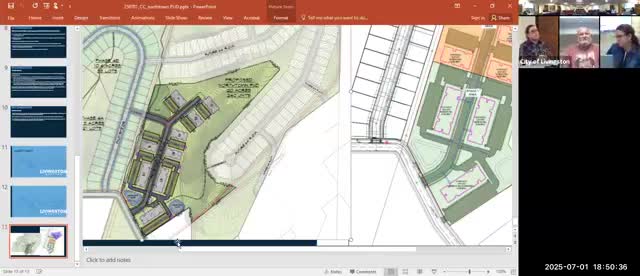Residents voice traffic concerns at City Council meeting regarding underpass plan
July 06, 2025 | Livingston City, Park County, Montana
This article was created by AI summarizing key points discussed. AI makes mistakes, so for full details and context, please refer to the video of the full meeting. Please report any errors so we can fix them. Report an error »

The recent City Commission meeting in Livingston, Montana, highlighted pressing concerns regarding traffic management and infrastructure as residents voiced their frustrations over ongoing congestion issues. The discussions underscored the need for a comprehensive approach to traffic regulation, particularly in light of proposed changes to local roadways.
One resident, expressing deep concern, criticized the current traffic flow, particularly the requirement for drivers to turn left at key intersections, which he argued exacerbates bottlenecks rather than alleviating them. He described a frustrating experience during the first day of school, where a simple trip took nearly two hours due to traffic jams. This anecdote illustrates the daily challenges faced by residents and emphasizes the urgency for effective traffic solutions.
Another participant, Lulu Herrera, raised critical questions about the impact of the proposed underpass on traffic patterns. She urged city officials to consider a broader traffic study that examines how changes to one intersection could ripple through the entire network, affecting routes and emergency access. Her comments pointed to the necessity of understanding the downstream effects of traffic regulations, especially in light of potential emergencies, such as wildfires, which could hinder evacuation efforts.
The meeting revealed a consensus among residents that while infrastructure improvements, such as the proposed underpass, are necessary, they must be accompanied by a thorough analysis of traffic flow and safety. The community is calling for a strategic plan that not only addresses current congestion but also anticipates future growth and its implications for local roadways.
As the city moves forward, the discussions from this meeting will likely shape future traffic management strategies and infrastructure projects. The need for a cohesive plan that prioritizes both traffic efficiency and public safety remains a critical focus for the Livingston community.
One resident, expressing deep concern, criticized the current traffic flow, particularly the requirement for drivers to turn left at key intersections, which he argued exacerbates bottlenecks rather than alleviating them. He described a frustrating experience during the first day of school, where a simple trip took nearly two hours due to traffic jams. This anecdote illustrates the daily challenges faced by residents and emphasizes the urgency for effective traffic solutions.
Another participant, Lulu Herrera, raised critical questions about the impact of the proposed underpass on traffic patterns. She urged city officials to consider a broader traffic study that examines how changes to one intersection could ripple through the entire network, affecting routes and emergency access. Her comments pointed to the necessity of understanding the downstream effects of traffic regulations, especially in light of potential emergencies, such as wildfires, which could hinder evacuation efforts.
The meeting revealed a consensus among residents that while infrastructure improvements, such as the proposed underpass, are necessary, they must be accompanied by a thorough analysis of traffic flow and safety. The community is calling for a strategic plan that not only addresses current congestion but also anticipates future growth and its implications for local roadways.
As the city moves forward, the discussions from this meeting will likely shape future traffic management strategies and infrastructure projects. The need for a cohesive plan that prioritizes both traffic efficiency and public safety remains a critical focus for the Livingston community.
View full meeting
This article is based on a recent meeting—watch the full video and explore the complete transcript for deeper insights into the discussion.
View full meeting
